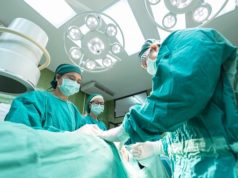
Two presentations at the Scoliosis Research Society annual meeting (SRS; 6–9 October, Philadelphia, USA) have shed light on the genetic factors at play in the risk and progression of adolescent idiopathic scoliosis (AIS). Familial studies suggest that AIS is heavily influenced by genetics, and more recent candidate gene studies have identified a number of factors likely involved in the incidence and progression of the disease. These new studies offer insight into the genetic factors associated with AIS.
A number of single nucleotide polymorphisms (SNPs) have been associated with curve severity and progression in multi-ethnic genome-wide association studies (GWAS). The first presentation, given by Wayne YW Lee (The Chinese University of Hong Kong, Hong Kong) aimed to replicate these results in the Chinese population. Selecting the top eight SNP candidates in the Chinese AIS population, researchers performed an independent genotyping among 319 girls with AIS (14.3±2.2 years old, Cobb angle ≥10 degrees) and 201 healthy girls (13.7±1.2 years old). The AIS patients were further subdivided into progressive (Cobb angle ≥40 degrees or requiring surgical correction) and non-progressive groups (Cobb angle <40 degrees upon reaching skeletal maturity).
Using peripheral blood samples, the team compared risk alleles frequencies for the eight reported SNPs between the control group and the AIS group, and between the progressive and non-progressive subgroups.
Among the eight candidates in this cohort, “the risk allele frequencies were significantly different for four SNPs, namely LBX1 (p<0.001), BNC2 (p=0.024), GPR126 (p=0.012) and LBX1-AS1 (p<0.001),” Lee told the audience. However, the subgroup analysis did not show significant association between the risk alleles with curve progression or curve severity.
These results validated the associations of these four SNPs with AIS in the Chinese population. “Further replication studies across different ethnic groups with larger sample size would be necessary to clarify whether these SNPs could potentially be genetic markers for predicting the occurrence/progression of AIS and, thus, to institute appropriate timely treatment,” Lee concluded.
Leilei Xu (Nanjing University Medical School, Nanjing, China), presented a genetic predictive model estimating the risk of developing AIS. Working from seven susceptible genes, researchers constructed a model which can explain 6.2% of the AIS risk in the Chinese Han population. Responding to the failure of the SCOLISCORE genetic diagnostic kit to be replicated in French-Canadian, Japanese and Chinese populations, Xu argued that a “stronger signal can be used to build a reliable predictive model.”
Xu and colleagues performed genotyping assays for seven previously reported susceptible variants, using unconditional logistic regression analyses to create a risk predictive model. In a cohort of 900 AIS patients and 1400 controls, the team successfully replicated all seven variants (AJAP1, PAX1, PAX3, GPR126, BNC2, LBX1 and BCL2).
The predictive model built from their data was demonstrated to have an R2 of 0.062, reflecting its ability to explain 6.2% of overall variance. “With a cut-off set at 0.5,” Xu explained, “our predictive model produced 87% sensitivity and 28.3% specificity.”
Risk models, Xu concluded, have “remarkable but limited discrimination power.” Predictive models based on genetic and clinical factors “may add to the probability of predicting AIS prior to its onset.”
This article was originally published in issue 44 of Spinal News International.













